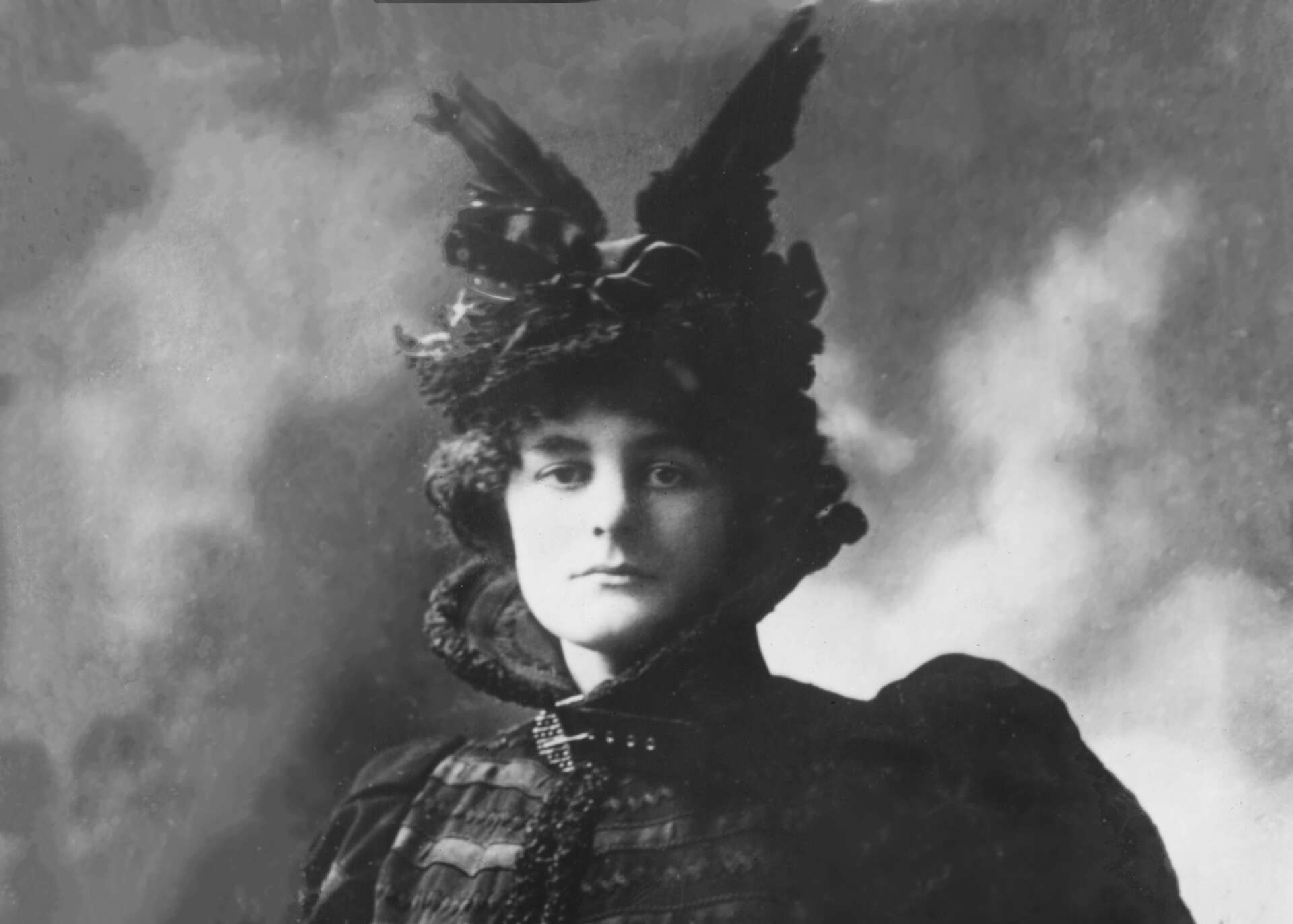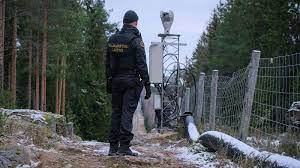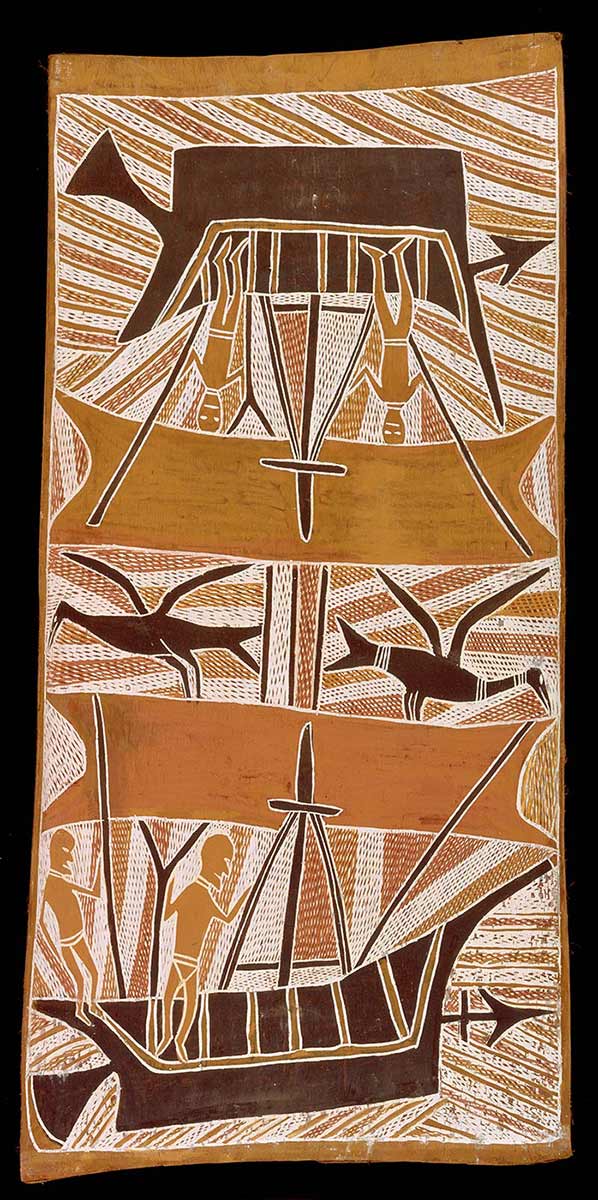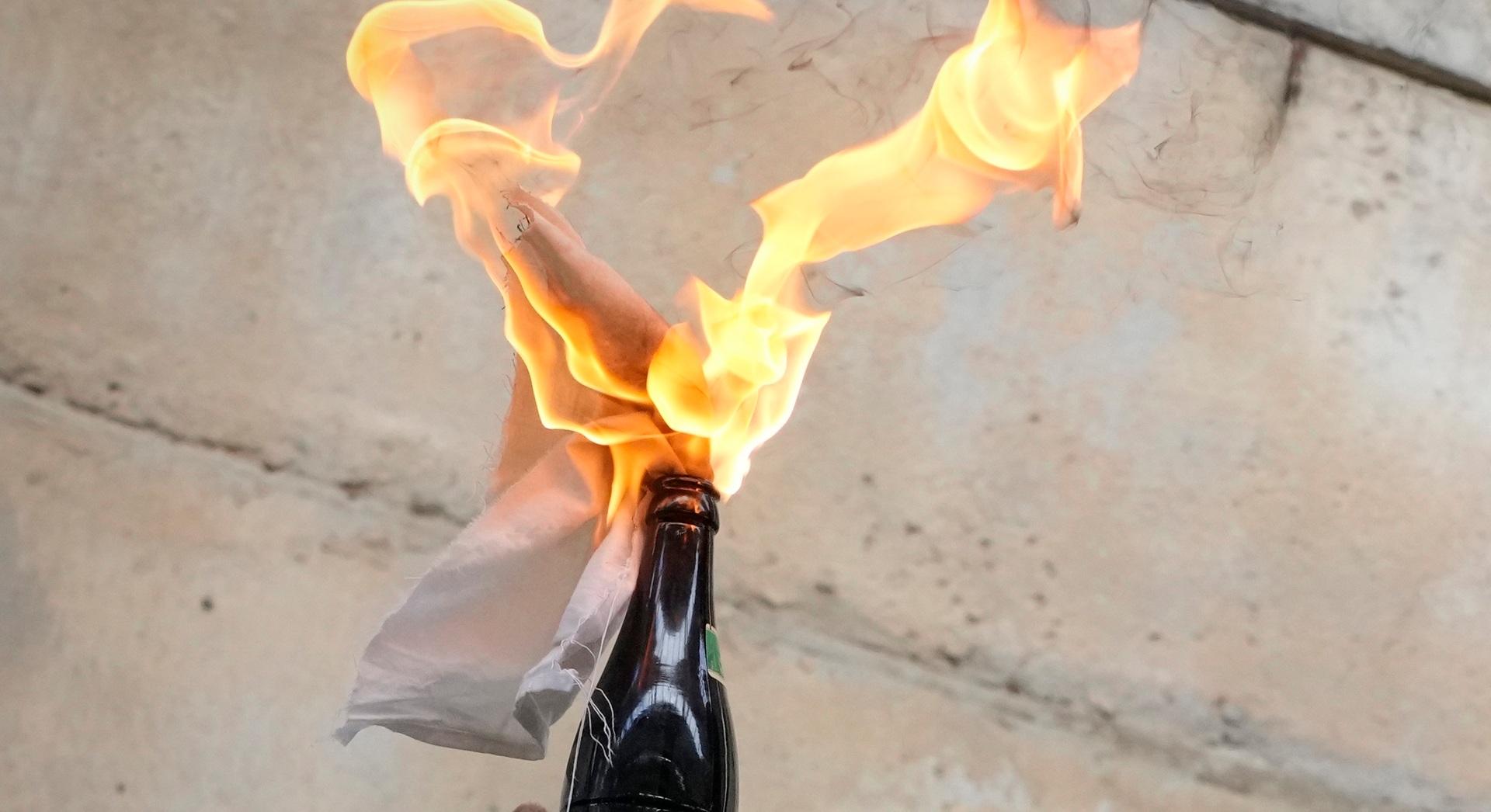Good Friday is the day of the year when my belief overrides my scientific logic and training.
An Abbey Homage
William Butler Yeats died in 1939, 337 days before I was born. I have had a contemplative regard for Yeats, who interpreted the magic of Ireland, to which only those with Irish heritage can relate. I recently acquired a commemoration number of The Arrow which was published in the Summer of that year, with a price of one shilling (in today’s terms approximately £2.60). It was the occasional publication of the Abbey Theatre in Dublin, and “occasional” was the watchword. The last Arrow had been published 30 years earlier. So Irish, but explicable in that Yeats had edited all five of them.

Yeats was the last surviving founder of The Abbey Theatre, which he had set up with Edward Martyn and Augusta, Lady Gregory (she was referred to as the greatest Irish woman of letters) in 1904. Married to an Anglo-Irish baronet, Lady Gregory’s home, Coole Park in Co Galway, gave its name to this nest of Irish nationalism and advocacy of the Irish language and folklore. Edward Martyn was the fervent President of Sein Fein, but neither Lady Gregory nor Yeats was Roman Catholic.
This slim panegyric is beautifully written by 12 contributors. There are illustrations by five artists including Yeats’ younger brother, Jack Butler Yeats (Yeats holds the distinction of being Ireland’s first medallist at the Olympic Games in the wake of the creation of the Irish Free State. At the 1924 Summer Olympics in Paris, Yeats’ painting The Liffey Swim won a silver medal in the arts and culture segment of the Games. In the competition records the painting is simply entitled Swimming). There is a facsimile scrawl of a Yeats letter, which one needs an expert to decipher. Among the advertisements in the publication there is one for “the collected and definitive edition of the works of W.B. Yeats – the Coole Edition priced at sixteen guineas (now £1,350) in eleven volumes”.
Each of the writers deserves a separate section of my blog to themselves and some of the language used to praise Yeats would seem somewhat out of place in today’s world. I will restrict myself to a quote from Oliver Gogarty, the Irish doctor, writer, bon vivant who was Joyce’s model for Buck Mulligan. He wrote about Yeats: “I thought of his ancestry from Cornwall where the names Yeats, Gates and Keats are originally one and where there is Phoenician blood with all the magic of the men who brought strange knowledge from the bright strand of the East to the Shadowy Waters of the far West – men who gave Merlin to King Mark and Yeats to humanity.
Such imagery.

On a rainy miserable day I visited Yeats’ grave in St Columba’s graveyard in Drumcliffe in Co Sligo. Unfortunately he was initially buried in France and was not reinterred until 1948. The problem was that in the intervening period the French cemetery was dug up and the bones jumbled, so at best a Hybrid Yeats lies there. But his wife, George, resides alongside him. She was the woman he married when he was 52 and she 25. She was a remarkable counterpoint to match the Yeats’ genius and assisted him to get over his lifelong unrequited passion for the fiery Irish nationalist, Maud Gonne.

Together, George and the Hybrid Yeats lie:
Under bare Ben Bulben’s head
In Drumcliff churchyard Yeats is laid,
An ancestor was rector there
Long years ago; a church stands near,
By the road an ancient Cross.
No marble, no conventional phrase,
On limestone quarried near the spot
By his command these words are cut:
Cast a cold eye
On life, on death.
Horseman, pass by!
And now I have read this remarkable issue of The Arrow, where the horseman can dismount and pause for a moment. In so many ways, Yeats was the Voice.
Clearer Yet One Day Shall Ring The Song Our Land Shall Sing
Vlinoe Hakkila, Speaker of the Diet, broadcast the proclamation in the name of the government and said that “we believe the civilized world … will not leave us to fight alone against an enemy more numerous than ourselves.”
“To all the peoples of the world!” said Mr Hakkila. “The Finnish people, who always have tried to work with all other nations, have founded their future on their peaceful work. Today they are the victims of brutal aggression from their eastern neighbour without having given any cause for this aggression.
“We have no choice. This struggle has been forced upon us. The people of Finland fight for their independence, their freedom and their homes. We are defending our fatherland, our democratic regime, our religion, our homes and all that civilized peoples hold sacred.
“So far we are fighting alone against an enemy that threatens to invade our soil, although it is in reality a struggle for all that humanity holds most precious.
“We have given proof that we wanted to do all we could in this struggle, but we believe the civilized world, which has given us testimony of its great sympathy, will not leave us to fight alone against an enemy more numerous than ourselves.”
The New York Times provides what it describes as a Time Machine whereby you can tap into any day and find what was reported on the particular day, and this occasion “the tap” was the date of my birth on eleventh day December 1939 when the conflict between Finland and Russia attracted the front page headlines. Later that article mentions that General Mannerheim, who had defeated the “Bolseviki” in 1918, was assuming command of the forces. Eventually, the Russians defeated the Finns and, in two land grabs, took substantial parts of Finland into the Soviet Union including the second largest city, Vyborg. The problem the Finns had at that time was allying to Nazi Germany, and certainly General Mannerheim fostered that link. In fact, at the end of WWI, the Finns had endeavoured to strike a separate treaty with Germany well before the Armistice.
Now the situation is very different. For a period in the nineteenth and early twentieth century, the Finns and the Russians lived in a symbiotic relationship. Finland had been ceded to Russia from Sweden in 1809, due to the Russians victory in its war with Sweden. Nevertheless, there remains within Finland a large number of Finns with Swedish heritage. The Grand Duchy of Finland was created under the rule of the Russian tsars, but with the advent of the Communist takeover of Russia, Finland in the ensuring chaos declared independence in 1917, a year before the Mannerhein-led victory mentioned above. Its independence was confirmed under the Treaty of Versailles.
The Mannerheim Line was built from 1931 onwards as the Finnish defence on the Karelian isthmus facing what was then the Russian city of Leningrad. This was the obstacle the Russians had to overcome when the war broke out on 30 November 1939. The NYT headlines reflected the sparring phase. Because Finland was perceived to be close to Germany, they ultimately received no support from the Western allies, so that the Russians were eventually able to win. Once the Russians brought in heavy artillery that was that; the early superiority of the Finnish infantry, especially in the snow, was neutralised.
In visiting St Petersburg (reverting from Leningrad), one realises just how close the Finnish border is. Nevertheless, even though we were on the Finnish train, crossing the border from Finland into Russia, as we did in more friendly times, it still meant we had to endure the Russian border police with their Siberian smiles.

Times are different in 2023. Finland has completely abandoned the neutrality status that it took as part of the price it paid after its defeat in order to maintain its independence, albeit presiding over a depleted territory. The Finnish/Russian border is now closed. The Russians now have a 1,340 km hostile border with this newest member of NATO. Before Putin’s bellicosity became the driving Russian force, I knew a public health specialist who was undertaking population health research in Karelia, a region which embraces both countries. She was able to freely cross the border to undertake her research project. But now? I suspect the snowshoe is on a different foot. Or more colloquially: a strong will takes you through the grey stone – Luja tahto vie läpi harmaan kiven. One Voice of Finland!
Galarrwuy Yunupingu
In 1988, the Australian Institute of Political Science held a dinner to celebrate the Bicentenary of Arthur Philip’s landing in Sydney Harbour to commence the colonisation of Australia as one of the red daubs painted on the map of the world. The British were voracious colonisers. Australia Day has not always been celebrated on 26 January. It was first celebrated on 30 July in 1915 and it wasn’t until 1935 that all Australian states and territories used the name “Australia Day” to mark 26 January. It was in 1994 that 26 January became a national public holiday.
The problem with a national day, and we ensured that the Dinner was not on any particular day connected with vicarious symbolism, is that it has been really settlement day, and that of NSW. After all, the Constitution acknowledges that Australia is a Federation, and each of the States has its own unique settlement day. This is what separates our acknowledgement of the Day from that of India, whose Republic Day falls on January 26 also. It was the day in 1947 when the Indian Republic was proclaimed – our nominal birth as the Australian Federation occurred on 1 January 1901. That is an inconvenient date for celebration as it would be overwhelmed by the New Year festivities, unless stage managed – with the probability that would be perceived as “faking it”. After all, the day of Federation is depicted as a starch-ridden affair with a British monarch-in-waiting as the centrepiece of a ghostly diorama of elderly men in frock coats. Hardly the image that would grab the future nation – the spectacle with loosened apron strings but still in the downstairs scullery of the British Empire. Hence January 26 is what was determined as National Day, and 1988, the Bicentennial Year. There was yet for us to feel the fevered crescendo of that date be renamed Invasion Day.

Hence, when the Australian Institute of Political Science determined to celebrate the Bicentenary with a dinner at the University of Sydney, it needed to have distinguished speakers who reflected our heritage. One was the then Governor-General, Ninian Stephens and the other Galarrwuy Yunupingu, who turned up in a not-to-be-forgotten powder blue suit. He was still a young man. He had the charisma; he said little but gave a powerful speech. Galarrwuy was not one for small talk.
Gondwanaland, then at the height of their fame, provided the music, and my lasting memory of Galarrwuy was he “jamming” on the didgeridoo with Charlie McMahon. Charlie had founded the band seven years earlier. Later in the year, as recounted elsewhere, Gondwanaland performed at the Tomita Sound Cloud in Sydney – Hymn to Mankind, a AUD$3 million light and sound opera spectacular held on Sydney Harbour as part of the Australian Bicentennial celebrations. The concert attracted an audience of over 120,000, then an Australian record for a live music event. Recently there have been media reports about the remarkable Charlie McMahon, especially in relation to the emergence of the Pintupi nine; his exploits have been reported in my early blogs.
I never met Galarrwuy again, and during my rural travels, I have only once visited Arnhem Land, apart from my visit with Bill Snedden to Kakadu in 1973. I’ve never been to the Garma Festival. When I was undertaking my Rural Stocktake in 1999, that was the first year of Garma and has been described as being no more than a barbecue for the local mob. It has grown from that time. Galarrwuy was smart – he was able to extract money from Rio Tinto, which he was able to distribute to his talented extended family. Eventually he succumbed to that array of diseases to which Aboriginal people are prone. He received, as with Charlie Perkins, a kidney transplant. Even when it was evident that he had multiple co-morbidities and was increasingly succumbing to them, he never lost his relevance and ruled with majesty, which entailed Australians from the Prime Minister down to show homage to him. They came to him; not him to them. Maybe that is the Voice – an Aboriginal monarch.
A Cough or a Voice?
As I listened to the Prime Minister, with his trademark snarl, in defending the Voice against the Dutton-Ley decision I wondered how many Australians have read the Uluru – Statement from the Heart. I assume this statement may be considered as Day One of the progression towards the referendum to give recognition to the Aboriginal people in the Constitution. It was a ceremonial clearing of the Throat. Having read it, and wondering how many others have read it, it is a most underwhelming document. The only substantive objective I gleaned to begin to understand the motivation is the following with one assumption crashing against the next:
Proportionally, we are the most incarcerated people on the planet. We are not an innately criminal people. Our children are aliened from their families at unprecedented rates. This cannot be because we have no love for them. And our youth languish in detention in obscene numbers. They should be our hope for the future. These dimensions of our crisis tell plainly the structural nature of our problem. This is the torment of our powerlessness.
To me, if you strip away the reasons and do not succumb to the blame games, and the background theme that “it’s everybody else’s fault”, it seems that too many whitefellas have not paid much attention and have not understood how to communicate meaningfully with Aboriginal people. Therefore, they (both whitefella and blackfella) become swept up in the slogans, without considering how to set priorities which the previous and ongoing funding has failed to deliver.
I have always marvelled at the fact that, for such a long period, Aboriginal people divided into its various mobs have roamed this continent, for so long mostly undisturbed, although there is no doubt that there have been periodic incursions.

There were Macassars from Sulawesi in search of trepang and sea cucumbers in the waters to the north of Australia. Then there is the presence of Machado Joseph disease in Aboriginal people on Groote Eylandt off Northern Australia. This is a neurodegenerative disease which originated in the Azores and has a Portuguese genetic signature.
While Dutch ships were wrecked on the Western Australian coast, with the Batavia attracting the most attention, I believe the fate of the survivors of the Zuytdorp, presumably destined to live with Aboriginal people, must have left some genetic imprint. None of the Zuytdorp complement survived to return to Batavia to tell what actually happened to the survivors.
But the one single event which has always intrigued me was the Mahogany ship story, whether it was a Portuguese caravel stranded on Killarney beach near the Victorian township of Port Fairy. No one can find any trace of it now and it seems to be the stuff of legend, including the claims of the mahogany being used in local buildings – the question of Portuguese adventurism remains.
Nevertheless, in large part the Aborigines lived alone for eons, developing their unique culture that we whitefellas did our best to eliminate – euphemistically called assimilation with an overlay of the policies which led to the “stolen generation”.
They lived for generations as a pure outpost of H. sapiens, the modern human race of which we all are members, which had seemingly emerged from the Rift Valley in Africa. As Rebecca Wragg Sykes has written, H. sapiens encounter with Neanderthals nearly led to H. sapiens extinction about 70,000 years ago. H. sapiens reaching Australia was made feasible by the land bridges. It’s noteworthy that some of aboriginal lore refers to the end of the Ice Age about 10,000 years ago. Sykes made the assertion that the genetic makeup of the Australian Aboriginal show traces of the Neanderthal race, unsurprising given how far this H. sapiens offshoot travelled across the globe, only to be isolated by the end of the Ice Age.
This was a unique people who lived for those eons without the wheel, without bows and arrows and, despite the assertion to the contrary, never embraced the Agrarian Revolution. Yet they were close to the Indonesian Archipelago and the Melanesian Island of New Guinea, where the people did have “gardens” and bows and arrows, and where the Torres Strait islanders seem a mix of many people from the South Pacific. The Aboriginal people live close by on Horn Island; the Torres Strait Islanders are different.
The Aboriginal people had an intricate oral tradition and intergenerational transmission as the way the culture survives. One of the difficulties is that western H. sapiens has long abandoned the oral pathway; and where the Aboriginal people lore has been transcribed, it has been done by whitefellas with the co-operation of each of the local mobs. But so much remains a matter of conjecture.
Recognising the aboriginals by throwing money at them has not worked if you believe that the only substantive matter in the Statement of the Heart is the rate of incarceration. Aboriginal culture is under threat because education and the whole pressure of social media, television and even substance abuse is homogenising Aboriginality. There is no one First Nation in Australia; there is a huge number of strands, of a folk lore, of customs, men’s and women’s business – and frankly I do not know what to believe in terms of what is heritage and what now is confected. How can I? I’m not Aboriginal and, by their own admission, many Aboriginal people themselves have lost contact with their heritage. The one realisation I have through my contact over the years with each Aboriginal mob, is that each has its own traditions – just look at the art and other cultural expression.
If the Voice is to have any impact, it must not be a Whine – and the preservation of Aboriginal culture, with a basis in the elder inheritance of the lore. This must be combined with lifting the Aboriginal people out of the conditions we consigned them to in the past 200 odd years. This oral culture is all very fragile, and prone to self-serving distortion. Because what does Voice mean? Nobody can articulate it – except to enshrine Aboriginality in the Constitution. If that statutory recognition does that, then that will be an achievement. But if it is a cynical political manoeuvre to settle old scores, to try and exacerbate white guilt or to give a small cabal of Aboriginal politicians an enhanced platform and heaven help us, delusions of grandeur, well then what is the point? It will not bring about the change that Australia wants.
Prime Minister, you have cleared the Throat, now let’s see how melodious is the Voice. It is up to you. Otherwise, it is in danger of being overwhelmed by the Noise.
Mouse Bipartite Whisper
Part 1:
In her recent book “Kindred – Neanderthal Life, Love Death and Art” – Rebecca Wragg Sykes has written:
Moreover, despite disbursing populations obviously spreading all the way into Australia by 65ka – adapting to arid deserts and wet mountain forests even an ocean crossing to Indonesia – there is no clear sign of H.sapiens in central or western Europe until 20,000 years later. Perhaps that land was already taken, and the Neanderthals were successful enough, at least for a while, to prevent others coming in.
Part 2:
A recent article in the New York Review of Books, entitled “Finland’s turn to the West” shares an interesting fact:
“I guess you know that Finns invented the Molotov cocktail, which was named after Stalin’s foreign minister Vyascheslav Molotov and used by Finnish troops to deadly effect against Soviet tanks during the Winter War( 1939-41).”
Presumably they are now hatching up a Lavrov cocktail to match that attributed to his predecessor – stirred not shaken?

